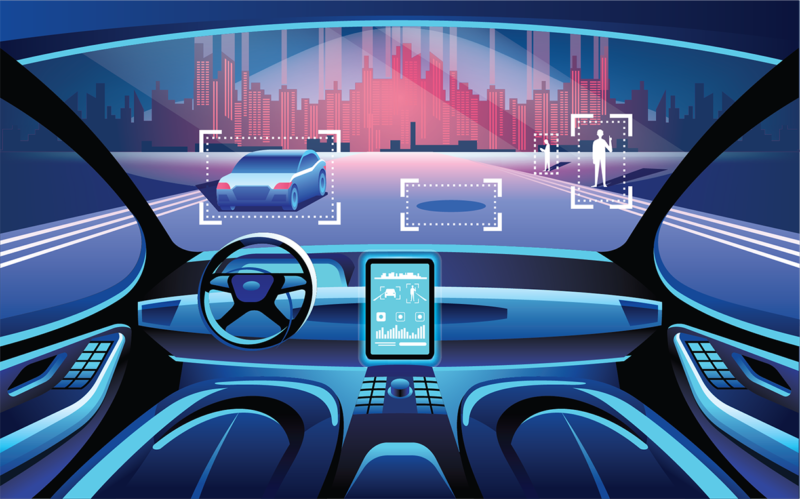
Self-driving cars, also known as autonomous vehicles, have long been hailed as the future of transportation. The idea of cars that can navigate roads, avoid obstacles, and safely transport passengers without human intervention has captured the imagination of tech enthusiasts and automakers alike. While significant progress has been made in developing self-driving technology, the question remains: When will we see fully autonomous cars on the road? In this article, we’ll explore the current state of self-driving cars, the challenges that remain, and when we can realistically expect to see them become a common sight on our roads.
1. The Current State of Self-Driving Technology
Over the past decade, major advancements have been made in the development of self-driving technology. Companies like Tesla, Waymo, Uber, and traditional automakers like Ford and GM are investing billions of dollars in autonomous driving systems. Today, many cars come equipped with semi-autonomous features, such as adaptive cruise control, lane-keeping assist, and self-parking.
Levels of Autonomy: Self-driving cars are classified into different levels of autonomy, ranging from Level 0 (no automation) to Level 5 (full autonomy). Most vehicles on the road today fall under Level 2 or Level 3, where the car can handle certain driving tasks, but human intervention is still required in complex situations.
- Level 0: No automation. The human driver is responsible for all driving tasks.
- Level 1: Driver assistance. The vehicle can assist with steering or acceleration, but not both simultaneously.
- Level 2: Partial automation. The vehicle can control both steering and acceleration/deceleration, but the driver must remain engaged and ready to take control.
- Level 3: Conditional automation. The vehicle can handle most driving tasks, but human intervention is required in certain situations.
- Level 4: High automation. The vehicle can operate autonomously in most conditions, but a human driver may be needed in some environments or conditions.
- Level 5: Full automation. The vehicle is capable of driving in all conditions without any human intervention.
Where We Are Now: While fully autonomous vehicles (Level 5) are not yet a reality, several companies are testing Level 4 vehicles in specific regions, such as Waymo’s autonomous taxi service in Phoenix, Arizona. Tesla’s Full Self-Driving (FSD) software also promises Level 4 capabilities, though it still requires human supervision.
2. The Challenges Facing Self-Driving Cars
Despite the significant progress, several challenges remain before self-driving cars can be widely deployed on public roads. These challenges span technological, regulatory, and ethical considerations.
Technological Challenges: One of the biggest hurdles is perfecting the artificial intelligence (AI) and sensor systems that enable self-driving cars to navigate complex, real-world environments. Autonomous vehicles rely on a combination of cameras, radar, lidar, and advanced AI algorithms to interpret their surroundings. While these systems work well in controlled environments, unpredictable situations such as construction zones, erratic drivers, and bad weather conditions remain difficult for AI to handle.
Regulatory and Legal Challenges: Another obstacle is the lack of clear regulations governing autonomous vehicles. While some states in the U.S. have started to create frameworks for testing and operating self-driving cars, there is no nationwide or global standard. Additionally, questions about liability—such as who is responsible in the event of an accident involving a self-driving car—must be addressed.
Ethical Dilemmas: Self-driving cars also raise important ethical questions. For instance, in an unavoidable accident, how should the AI prioritize decisions that could result in harm to passengers or pedestrians? These moral dilemmas are difficult to encode into algorithms and have sparked debates about the ethical design of autonomous systems.
3. The Road Ahead: When Will We See Self-Driving Cars?
The timeline for when fully autonomous cars will become a common sight on the road is still uncertain. While some experts predicted that we would have fully self-driving cars by 2020, those predictions have proven overly optimistic. However, most industry insiders believe we are not far off from seeing widespread adoption of self-driving cars in specific regions and use cases.
2025 to 2030: Many analysts expect that by the mid-2020s, we will see more Level 4 autonomous vehicles being deployed in controlled environments, such as designated areas in cities or highways. Companies like Waymo, Cruise, and Tesla are leading the way in developing autonomous taxis and delivery services that could become more common within the next five to ten years.
Beyond 2030: Achieving Level 5 autonomy, where vehicles can drive in any condition without human intervention, may take longer. Experts predict that it could be well into the 2030s before fully autonomous vehicles are available to the general public on a widespread scale. The technology needs to mature, and regulatory frameworks need to be established before self-driving cars can operate seamlessly alongside human-driven vehicles.
Industry Partnerships and Investments: Collaboration between automakers, tech companies, and governments will be crucial in accelerating the development and deployment of self-driving cars. Recent partnerships, such as the one between GM and Honda on autonomous vehicle technology, highlight the importance of shared resources and expertise in overcoming the remaining challenges.
4. The Benefits of Self-Driving Cars
When self-driving cars do become a reality, the potential benefits are immense. Autonomous vehicles could revolutionize transportation, making roads safer, reducing traffic congestion, and improving accessibility.
Increased Safety: Human error is responsible for the vast majority of car accidents. Self-driving cars, with their advanced sensors and AI, have the potential to drastically reduce accidents by reacting faster than human drivers and eliminating behaviors such as speeding or distracted driving.
Reduced Traffic Congestion: Autonomous vehicles can communicate with each other and optimize traffic flow, reducing the number of cars on the road and minimizing congestion. Self-driving cars can also coordinate with smart traffic systems to manage intersections more efficiently.
Accessibility: For people with disabilities, the elderly, and those who cannot drive, self-driving cars offer the promise of increased mobility and independence. Autonomous vehicles could provide greater access to transportation for individuals who may have been previously excluded.
Environmental Impact: Many self-driving cars are expected to be electric, contributing to a reduction in carbon emissions. Furthermore, autonomous cars can drive more efficiently, reducing fuel consumption and environmental impact.
5. The Future of Transportation: Beyond Self-Driving Cars
Self-driving cars are just one piece of the puzzle when it comes to the future of transportation. Autonomous technology is likely to be integrated into other forms of transportation as well, including trucks, buses, and even air travel.
Autonomous Trucks: Self-driving trucks could revolutionize the logistics and transportation industries by increasing efficiency and reducing the need for long-haul drivers. Several companies, including Tesla, Waymo, and TuSimple, are already testing autonomous trucks on highways.
Urban Air Mobility: The future of transportation may also include autonomous flying taxis, with companies like Uber Elevate and Joby Aviation working on air mobility solutions that could transport passengers through the skies in urban areas.
Smart Cities: As self-driving cars become more common, they will likely be integrated into smart city infrastructures. These cities will use advanced technology to manage traffic, public transportation, and energy consumption, creating more efficient and sustainable urban environments.
Conclusion: When Will Self-Driving Cars Be the Norm?
While self-driving cars are not yet ready to take over the roads, we are getting closer to seeing widespread adoption in specific use cases such as autonomous taxis and delivery services. The transition to fully autonomous vehicles will be gradual, with Level 4 cars likely becoming more common in the next decade and Level 5 autonomy further down the line. However, the potential benefits of self-driving cars, including increased safety, reduced traffic, and greater accessibility, make this an exciting and transformative development in the future of transportation. As technology, regulations, and infrastructure evolve, the era of self-driving cars may arrive sooner than we think.





